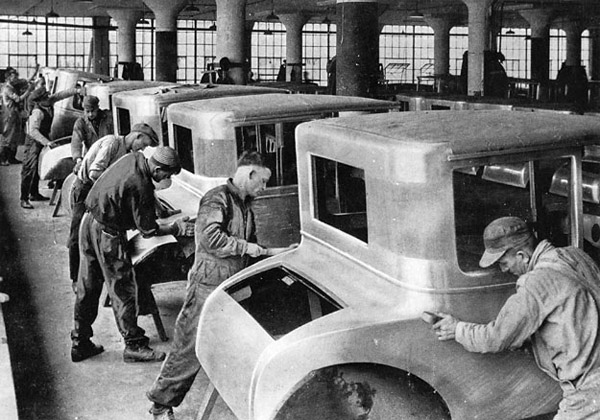The taxpayers have generously given up their milk money to government bully’s, and the kids with spilt milk now have something to dunk their cookie in. Automotive News headlines in June, read, Detroit 3 are Big 3 again. Where the Japanese automobile once reined supreme, the domestic has become a worthy adversary. Some consumers may choose to remember the compact jalopies of the 70s and 80s, such as the exploding Ford Pinto. However, for every quality, domestic compact put on the street today. An embarrassing memory is replaced by one with pride and renewed confidence.
Depending on your political leanings, location, and the car sitting in your driveway, the government bailouts were either a great success or tremendous failure. We’ve seen similar outcomes in battles between good vs. evil, Alien vs. the Predator, and Charlie Sheen vs. his “winning” attitude. We may not have a unanimous victor, but the players have emerged with a common interest. While domestics continue to fancy large vehicles, of which they gain an average of $10,000 more profit per sale. It is in their best interest to focus on their mini-me cousins as a central strategy to their survival.
The situation in Libya continues to create volatile crude oil prices, but from the vantage point of a 16-foot SUV rolling on 22-inch dubs, the problems of middle eastern countries doesn’t seem particularly momentous without the threat of $4/gallon gas. The US consumer’s memory is short, as recent sales of trucks suggests, but nothing changes their mind faster than an empty gas tank. Sales from larger vehicles may have tickled the economy during the first half of 2011, but the small, economy car will maintain profits through the upcoming roller coaster of gas prices.
Domestic manufacturers have listened to the consumer, bringing smaller, better, and more economical vehicles to the table. In 2000, one out of every eight vehicles sold was a compact. Today, these statistics have doubled, increasing their popularity to nearly 25 percent of profits. The playing field has been leveled for 2011, and consumer’s can find a 40 mpg alternative in just about any flavor (excluding Chrysler, although the Fiat 500 comes close).
Chrysler has come a long way since its 1970 Newport (6.3 liters, 4400 lbs, and 0-60 in less than a week). It has restructured their leadership program (Sergio Marchionne), improved product lines (Jeep Grand Cherokee, Dodge Durango, 300), and managed to win back enough consumer trust to gain third place in US sales for May, 2011. General Motors (GM) has an increased market share in both America and China, reducing its “Government Motors” nomenclature from its previous 61 percent in Federal ownership, to now less than 40 percent.
Ford has been praised by consumer reports for garnishing the same quality standards as Toyota. This has been dually noted by the $6.6 billion in earnings they posted in 2010. The most difficult challenge for Ford will be maintaining momentum as Japanese markets scramble to regain lost ground. Japanese automakers lost a whopping 7.3 points in US market shares in May.
Beyond Mother Nature’s unkind blow to Japan during the March 2011 earthquake, their eroding dominance is also due to a relaxed contentment to build the same vehicles that have wowed American audiences for a decade. The distance between class leaders and their challengers, in terms of quality, has been steadily declining. With such fresh faces as the Chevrolet Cruze and Ford C-max to compete with, the Toyota Camry may be like a freckle you’ve admired on your spouse’s tush for the past 20 years, but even a red hot ember needs a little agitation to maintain the same heat.
Research suggests the effects from the Massacre of 2008 is slowly recovering, while other opinions claim the effects could have been much worse. According to a study by the University Of Michigan, the damage to automotive reliant states have plunged income levels by as much as 8 percent in some counties. However, the Center for Automotive Research (CARS) suggests 3 million jobs have been spared thanks to government bailouts, accumulating to nearly $97 billion in personal income between 2009-2010.
The good news for many states, is they can expect an upswing in industrial positions over the next five years, adding 34,000 new jobs nationwide. In the negative front, the wages and benefits of these jobs will be reduced from pre-2008 standards, increasing the threat of worker loss, should the economy offer greater opportunity elsewhere. All in all, the auto industry is reminiscent of past mistakes, poised for change, privy to new technology, and ready to make one hell of a comeback in 2012!




